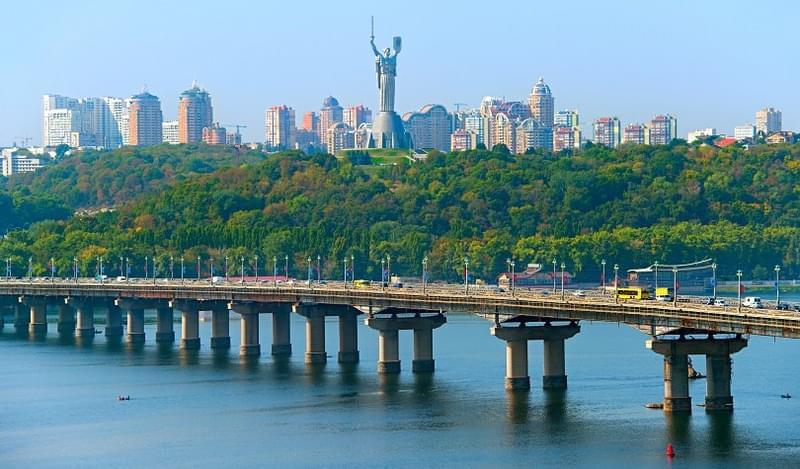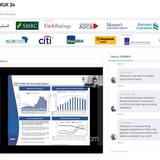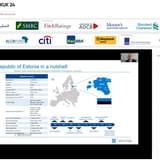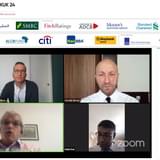The European Union will let Ukrainians and Georgians visit the bloc freely after diplomats and lawmakers agreed on Thursday on an emergency brake to suspend visa waivers, ending an EU dispute that stalled the move.
While the EU has been set to open its borders to Ukraine for some time, many of the block’s members feared integrating Europe’s second biggest country by area (and eighth by population) could trigger an uncontrolled influx of migration.
The latest agreement is based around a snap-back mechanism that would allow the EU to suspend the deal if the flow of applications becomes unmanageable, and clears the way for visa waivers for Ukraine as well as Georgia.
For Ukraine, which continues to battle the pro-Russian separatists in Donbass region, the visa waver is a welcome development. In the long term, the country will benefit from closer economic and social ties with Europe, said Oxford Economics economist Evghenia Sleptsova, but in the short term the opening of borders could undermine economic potential of a country already struggling with a demographic crisis.
“Ukraine last year lost about 500,000 people to a more relaxed visa regime with Poland and the Czech Republic – this had a dramatic impact on Ukraine’s labour force,” Sleptsova said. “The country currently has one of the worst demographics in the region and further emigration flows could hinder growth.”
Ukraine’s own borders have for years been unilaterally open to EU citizen’s, and while this latest development does not necessarily provide any added incentive to foreign investors, it certainly signals that Ukraine is on a path towards deeper integration with Europe, and as such ought to make long-term investment in the country more appealing.
“Looking at the big picture, the fact that EU is working towards tighter integration with Ukraine sends a strong and positive signal,” she added. “This is particularly important for the country’s political stability. If we look at similar events in Moldova, where a pro-Russian politician has now come to power, that government will still find it very hard to roll back EU integration, particularly because of free travel.”
That said, there are still significant obstacles within the EU itself and, with the rise of anti-EU and anti-globalist sentiment on the continent, Ukraine’s integration may be more challenging than the government anticipated.
The Netherlands threatened to sink a trade and security deal between the Ukraine and the EU unless legally binding guarantees are provided at a summit of European leaders this week. The move followed a two-to-one Dutch referendum vote against the deal in April.
Other EU members have also expressed doubts about Ukraine’s potential membership in the past, citing concerns about rampant corruption and poor state of the economy, which could potentially lead to a wave of emigration.
The ongoing legal confrontation between Ukraine’s Naftogaz and Russia’s Gazprom is another potential liability, with up to US$3bn dollars at stake. The issue is complicated further by EU’s delicate stance: the block needs to maintain steady supply of Russian gas through winter, via a Ukraine transit, while Ukraine’s anti-monopoly committee is demanding the Russian gas giant first pay a US$6.8bn fine for alleged antitrust law violations.
According to Sleptsova, this year the “annual” legal skirmish will finally see Ukraine carry some leverage, as it has been able to diversify its gas supplies since the start of the Crimea annexation and is no longer reliant solely on Gazprom’s supplies.
“The lawsuit served Ukraine well because it allowed the country’s gas industry to reorient itself towards reverse flows and makes it less vulnerable to Russia’s wintertime gas blackmail. The main point of discussion now instead is the transit,” the analyst said.
Along with progress towards a visa-free regime with Europe, another boost for Ukraine came earlier last week in the form of a US$350mn security loan from the US, approved by Congress as it passed the National Defence Authorization Act (NDAA) for fiscal year 2017.
According to the bill, the loan is to be provided for security assistance to Ukraine in its fight against Russia-backed rebels. The amount represents a US$50mn increase from US$300mn authorized in NDAA last year.
It also gives a confidence boost to Ukraine and US’s other Eastern European and NATO allies of continued support, although the election of Donald Trump, who in the past dismissed importance of Ukraine and even hinted at accepting Russia’s annexation of Crimea, remains a concern for the next few years.
Corruption Holds the Economy Back
Ukraine has a host of more pertinent challenges to address, most which seem to merge in one recurring problem: corruption. Sleptsova points out: “The EU agreement is a positive signal, for sure, but if I were an investor, I would be looking out for successful anti-corruption cases – that would be a stronger signal.”
Last Wednesday, as Russia’s Rosneft was finalizing its part-privatization deal with Glencore and Qatar, Ukraine’s latest call on foreign investors rang hollow as the second auction for its flagship state-owned Odessa Portside Plant failed to attract any bids.
The sale of The Black Sea fertilizer plant was meant to signal a new wave of privatization, and following the initial failure in July the government dropped the bidding price floor by more than half to around US$200mn – to no avail.
The problem, it appears, is the US$200mn debt guillotine hanging over the asset, reportedly owed to exiled tycoon Dmytro Firtash, as well as ownership disputes between another billionaire, Igor Kolomoisky, and a group of Ukrainian business oligarchs.
Lack of ownership transparency, weak rule of law and significant influence of vested interests in Ukrainian politics means these sovereign and quasi-sovereign assets deter investors, even at huge discounts being offered by the government.
“Ukraine still has big political and institutional risks,” Sleptsova commented. “Deep-seated corruption is the one challenge the government has been unable to solve and it could weaken Poroshenko’s positions in the coming elections.”
“The share of the public sector in Ukraine is huge, but is mostly held in the tightly linked interest groups and oligarchs. Strategically important assets are getting caught in a tug-of-war between those groups.”
While the proposed selling of state firms has not been an explicit condition of Ukraine's US$17.5bn aid program from the International Monetary Fund, it forms part of the fiscal rebalancing the IMF requires, and the lack of progress has dragged on the economy.
In fact, the inefficiency of Ukraine’s economic system and government institutions is so prevalent and far-reaching that some of the state services have been forced to turn away money from lenders – because they cannot pledge to distribute it effectively.
At the beginning of December, Ukraine’s state road authority Ukravtodor and its main lender, the World Bank, announced in a joint statement that the US$220mn loan would be temporarily withdrawn from Ukravtodor’s portfolio because the money “isn’t moving fast enough and is becoming an economic burden.”
“Cooperation with our international partners is very important for Ukraine, and particularly, for the development of the road sector. However, we have to be realistic about our capacity to use such funds,” the Ukravtodor said in the statement.
On the surface, an inherent failure to implement loans provided by international FIs seems to bury any hope of Ukraine’s return to the capital markets any time soon. In the aftermath of Trump’s election, investors rushed to sell off Ukraine’s sovereign bonds, with dollar-denominated bonds falling across the curve.
Ukraine's average yield premium to US Treasuries rose as much as 84bp, significantly underperforming the broader EM debt universe. But some investors see it as more of a knee-jerk reaction to Trump’s perceived non-interventionist attitude.
“Trump will not be able to give in that easily to Russia, and, Europe plays an important part here ... The Europeans won't allow him to go too easy on Russia,” said Marco Ruijer, who leads the emerging market debt team at ING Investment Management.
Foreign direct investment (FDI) in Ukraine’s capital markets have shown a positive dynamic recently, reaching US$45.1bn as of October 1, 2016, up 6.2% or US$2.62bn compared to the start of the year, according to the State Statistics Service.
The country’s budget deficit has been reduced almost five-fold under Poroshenko’s administration and a range of reforms – from asset declarations for state officials to the development of an anti-corruption framework – though fragile and patchy, have been positive.
“EU support for Ukraine remains a work in progress, despite good efforts by the Commission”, said Szabolcs Fazakas, the Member of the European Court of Auditors that delivered a report for the EU last week. “At the time of our audit, there was a strong political commitment to public administration reform. But management changes jeopardised the reforms and low salaries created openings for corruption. Further steps are needed to meet objectives.”
For now, with fighting in the East “frozen” and the economy slowly turning to recovery, Ukraine’s chances to meet those objectives seem improved.









